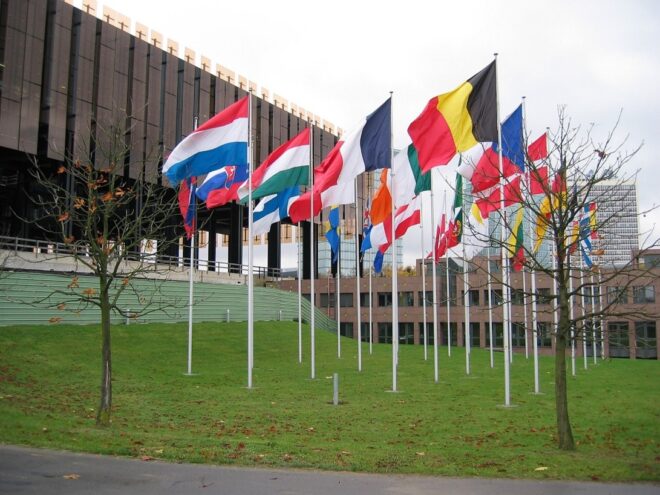Both an international human rights regime, such as the European Convention system, and supranational Union law have given rise to what I would like to characterize as transnational constitutional law, narrowly and properly understood. In contrast to the more sweeping use of this concept that refers to all legal phenomena having some cross-border dimension, transnational constitutional law, narrowly and properly understood, denotes law that originates from convergence that is neither truly customary nor conventional in nature. It is constitutional law as to its substantive impact, for it amends, or at least claims to amend, existing constitutional law in either the domestic or the supranational sphere.
Following Cassese’s apt characterization of common constitutional traditions, transnational constitutional law represents “higher law made of lower law”. In the case of human rights law, we encounter this in various assertions on the part of the ECtHRs that there exists or has emerged “consensus” among the participating states. This consensus affects the unyielding scope of fundamental rights and therefore alters, restricts, or even eradicates the “margin of appreciation”. In the context of EU law, by contrast, transnational constitutional law speaks to us mostly in the form of “common constitutional traditions”. The scope of these traditions is, of course, an open question. Given that an appeal to them has played an important role in fundamental rights law, it may make sense to restrict them to this field. At the same time, at least the wording of Article 6(3) TEU suggests that fundamental rights may merely be one manifestation of this source and that they may well be of relevance to other general principles of EU law, too. It is a different matter, which I nonetheless would still like to address briefly, whether Article 2 TEU is also a manifestation of transnational constitutional law, for it can be read in at least two different ways. The first suggests that the values expressed in Article 2 are the Union’s values regardless of whether they are in fact shared by the Member States. Article 2 demands, however, that they be common to all Member States. Alternatively, according to a second reading, the values are contributions made by the liberal democracies constituting the Union and can thus be regarded as a commitment that they also have in common outside of it. This path-dependence would imply that their meaning and significance has to be determined with an eye to what the Member States endorse in their constitutional traditions. The values of Article 2 would thus also represent “higher law, made of lower law”, whereas “higher” in this case means supranational law. But even if one followed the first reading, according to which the values in Article 2 are “autonomous” Union law, the fact that Article 2 states that they are also shared suggests that their substance is best fleshed out, as a matter of interpretation, with an eye to what Member States practice in the name of democracy, the rule of law, and human rights. It must therefore remain essential, from the Union’s perspective, that the Member States converge on a certain minimum level. Otherwise, the common values would be cast asunder or diluted to a level at which they became entirely hollow. Even Ziobro’s system would then pass muster as a system of judical independence.
If transnational constitutional law in this narrow and proper understanding is higher law made of lower law, then what is puzzling about it is how lower law can attain such a jurigenerative power. Two conditions appear to be salient in this context. The first condition is convergence. In the case of “consensus”, what is of relevance is national legislation that is seen to lend expression to what the participating states regard as demanded by, or at least consistent with, convention rights. In the case of “common constitutional traditions” it is national constitutional law that gives rise—somehow—to supranational law. The “somehow” of its origin points to the second condition. Transnational constitutional law requires a court to recognize its existence. It would not be relevant without such recognition.
In both its international and supranational instantiations, transnational constitutional law is tarnished with a high degree of indeterminacy. It concerns the number of converging states required to give rise to constitutional amendments as well as the substance of the amended norms. For this reason, any assertion of transnational constitutional law by an adjudicating body must raise the specter of an encroachment from above. This explains why transnational constitutional law is surrounded by a ring of contestability.
The objections that can be relevantly made vis-à-vis assertions of its existence are different from the protests voiced by objectors who merely assert their persistent lack of consent to an alleged rule of customary law. The objections have to be grounded in more than mere freedom of choice, as it were, which means that withholding consent alone is not sufficient to undergird doubts concerning its existence.
More precisely, these grounds can be either internal or external.
They are internal when courts (or even scholars) located in national jurisdictions—usually constitutional courts—challenge the facts necessary for the existence of consensus or communality. They inveigh against the application of conditions that, at the end of the day, remain more or less indeterminate in any event. But they claim to apply the same murky assertability conditions, however, they claim to do so with greater accuracy than the international tribunal.
The contestation is external when it does not submit the finding of a consensus to an internal critique, but when it rejects a rule or a principle on the grounds of being incompatible with non-negotiable elements of the national constitutional system (its “essentials” or “identity”).
A classical instance of an internal contestation in the human rights context is the Hirst case, in which UK representatives objected to the assertion of consensus. In the same context, external challenges, subtly and suitably articulated by the Federal Constitutional Court, can range from the demand that compliance with international human rights jurisprudence may require careful adjustments all the way down to appeals to unyielding national constitutional identity. The Russian, when Russia was still a member of the Council of Europe, and Eastern European Courts have become champions of such “principled resistance”.
In the context of EU law, internal contestation concerns, again, alleged flaws in the assertion of a constitutional traditions. The Mangold case comes to mind. The anticipation or external contestation is epitomized possibly by the Omega Spielhallen case in which the European Court of Justice all of a sudden appropriated human dignity for Union law in order to avoid the impending collision with the German constitutional system.
Remarkably, however, the Union system repeats itself, in the case of common constitutional traditions, on its more general features, which is also relevant outside an assertion of transnational constitutional law. Namely, that it exists de facto under Solange or controlimiti conditions. The authority of the Union is, despite being founded on international agreements, subject to conditional yielding. This is true not only in the realm of fundamental rights, but also of supranational authority in general, not least with an eye to identity challenges. If I am not mistaken, the European Court of Justice has not yet been amenable to such challenges (we have Simmenthal, after all).
As a result, any assertion of transnational constitutional law has to face up to two countervailing principles. One is the principle of contestability. This principle is indispensable, for if not, the inter- or supranational court would be free to assert what it wants. It would otherwise by subterfuge acquire sovereign authority. The other principle is that of conditional yielding. If this latter principle becomes generalized—as was done over the last few years at this institute with the development of reverse and horizontal Solange—it gives effect to a mutual pledge to sustain liberal democracies in Europe. This, at any rate, is the new story that can be told about European integration in the wake of what von Bodgandy calls the “second saddle period” of European integration.
Transnational constitutional law is vertical. It is asserted from “above” and seeks to constrain those located below. Owing to contestability and its cognate principle of conditional yielding, however, the horizontal dimension is never fully absorbed. Rather, it can be activated in a pluralist context, that is, in a context where there is no final authority to assert what is right for all. All assertions of that kind remain system-relative. Collisions require dialogue and compromise for their resolution, and this may well involve a protracted process of adjudication in the spirit of comity. At the end of the day, Europe’s constitution is political, in the sense articulated by John Griffith. The constitution is “what happens”. Europe’s constitution is in and of itself historical.
Today, I have given you an introduction to the topic. I am confident, however, that exploring the form of this type of law would provide us with valuable insights into the pluralism of European Union law.
|
Suggested Citation: Alexander Somek, On the Very Idea of Transnational Constitutional Law, MPIL100.de, DOI: 10.17176/20240403-135705-0 |
|
| Lizenz: CC BY-NC-SA 4.0 DEED | |

Alexander Somek is a Professor of Legal Philosophy in the Faculty of Law of the University of Vienna. He is currently working on a book concerning “The Constitution of the Legal Relation”, I which he would like to defend a pragmatist approach to law. Most recently, he co-authored with Elisabeth Paar ‘Europe’s Political Constitution’, which appeared in European Law Open.


